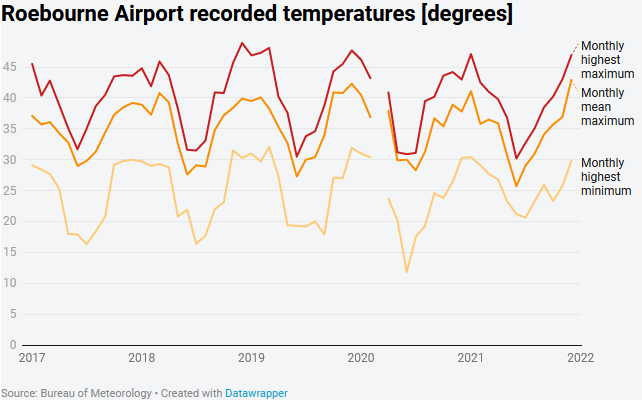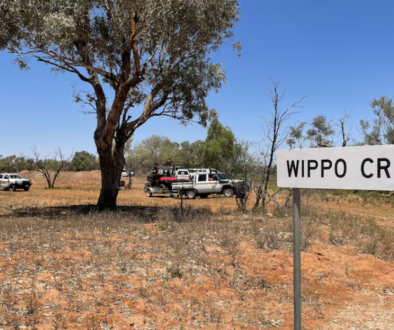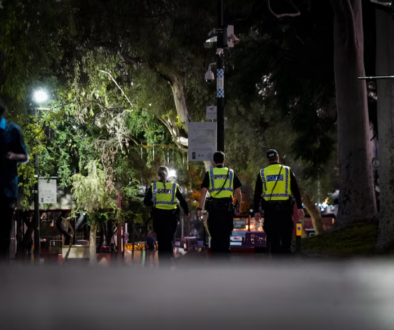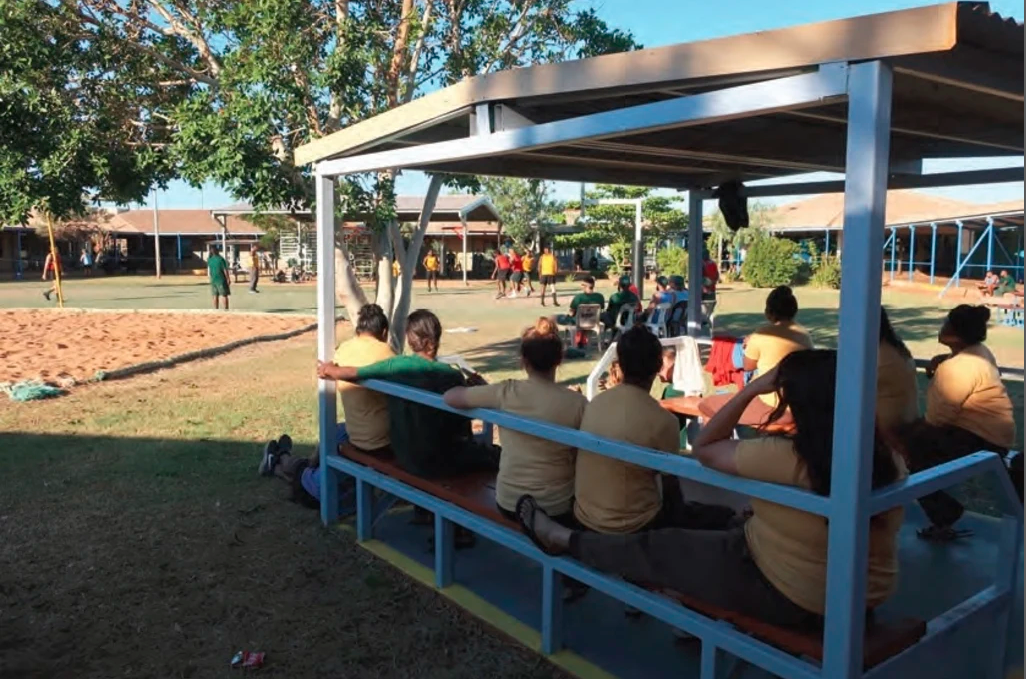
Refusal to put airconditioning in Pilbara prison where temperature hit 50.5C is racist: ALS
Originally published on WA Today by Peter de Kruijff
As the airport weather gauge in the Pilbara town of Roebourne hit the record for the second hottest day in Australian history on Thursday, with the mercury hitting 50.5 degrees, inmates in the country’s hottest prison just down the road were sweltering in tiny cells with no airconditioning.
A lack of action by the West Australian government around installing airconditioning for cells, despite desperate pleas by the independent prison watchdog for nearly two decades to resolve the problem, is ‘racial discrimination’, according to the Aboriginal Legal Service WA.
ALS WA legal services acting director Alice Barter said the conditions in the medium-security prison, which houses both men and women, would not be tolerated if the majority of people in the facility were not Aboriginal.
Ms Barter pointed to the Department of Justice’s response to a recommendation in the 2020 Office of the Inspector of Custodial Services report on the facility, as evidence of a discrimination.
The department detailed how one of its heat mitigation controls was to “retain prisoners at Roebourne who are from and are acclimatised to the local conditions of the region” while “prisoners not from the region are prioritised for transfer”.
Ms Barter said the department’s response was discriminatory.
“The department has said prisoners in the region are acclimatised to the conditions,” she said.
“We are saying they are accepting a lower standard for Aboriginal prisoners and that is not acceptable … and therefore racially discriminatory.
“We also say there is a significant health risk and that those conditions breach international human rights law.”
Heat concerns raised for two decades
Prison inspections are legislated to occur a minimum of every three years but for more than a decade, Roebourne has been reviewed every two years.
The increased frequency of OICS reviews has been due to the agency’s ongoing concerns about a facility built in 1984 that a previous inspector said was probably the ‘worst prison’ in WA and the state government itself thought about closing in 2003.
The first report on Roebourne by the OICS, based on an inspection in 2002, raised the heat of the prison as one of its biggest issues.
“Prisoners said that the heat of their cells was the most uncomfortable aspect of their time in the prison, with many talking about the lack of ventilation in their cells and the efforts they went to in order to cool down,” it said.
“Many prisoners indicated that the early lock-up meant that they spent over 12 hours in hot, poorly ventilated cells.”
Changes have been made over the years so prisoners have access to small desktop fans and ice but at the same time a rise in prison population has meant the 7 square metre cells at Roebourne have been home to two people despite being designed for just one.
By 2016 the OICS stopped asking generally for climate control solutions and outright recommended air conditioners needed to be installed in every cell.
OICS inspector Eamon Ryan told WAtoday the department had brought in heat mitigation for during the day — with things like misters on the verandahs and air conditioning in the recreation room and a limited number of special cells for prisoners with medical conditions — but it was a different story when the sun went down.
“When they’re [prisoners] locked in at night and the cell doors are closed and there’s two men in a small room, that’s when the temperatures can be stifling,” he said.
“That’s the reason why we have constantly recommended some form of heat mitigation.
“A lot of people say, in the Kimberley the people who live there and in the Pilbara people are used to it, but I can guarantee you if you’re in the Pilbara tonight [Thursday] and you don’t have air conditioning, you’re dragging your mattress out to the verandah.”
The temperature overnight in Roebourne following the 50.5 degree day remained higher than 30 degrees.
A special review by the OICS of thermal conditions in the prison six years ago found cell temperatures in the 2014 summer period never fell below 29 degrees.
The average night temperature in non-airconditioned cells recorded in the special report was 33 degrees and typically over 35 degrees just before midnight.
There were 82 cases of heat-related illness reported between 2010 and 2016 to the prison’s health centre.
Several studies and cases into solutions have been prepared over the years including a business case in 2016 that suggested spending $2.4 million on air conditioning with a recurring operational spend of $310,000.
Solar panels could also have been included as part of the project but the corrective services arm of the West Australian Department of Justice declared the air-con initiative was not a priority in response to the 2020 inspection report of the prison.
The same report stated prisoners spoken to by the OICS in 2019, shortly after a 48.1 degree day in Roebourne, were upset air-conditioning had been installed in staff toilets but not any prison living areas.
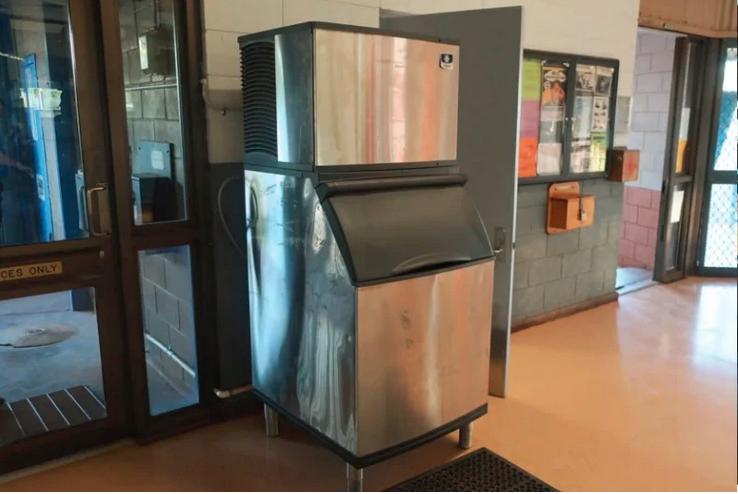
Mr Ryan said quite simply the current situation was not humane and prisoner’s health and welfare was at risk.
“There’s logistical difficulties with the prison being old, and the costs. I acknowledge those things, but there are human beings in there and they need to be treated decently,” he said.
Mr Ryan said there was about 169 people in the prison at the moment and generally about 90 per cent of inmates were Aboriginal.
‘Unaware there was no cooling’
ALS WA wrote to the corrective services and Aboriginal affairs ministers on August 7, 2020, raising concerns about the temperatures at Roebourne prison in a letter co-signed with Pilbara organisations and the WA Council of Social Service.
Ms Barter said there was no response to the letter.
Another letter has since been sent to the ministers in December.
Human Rights Watch Australian researcher Sophie McNeill said it was deeply shameful the cells in the prison still did not have any airconditioning despite a recommendation by the prison inspector six years ago to do so.
“WA is a wealthy state that had a record budget surplus this year,” she said.
“How in good conscience can the department continue to refuse to install this? The McGowan government should fix this immediately, these prisoners at Roebourne cannot continue to be treated in this manner.”
A Department of Justice spokeswoman said a number of effective controls were employed to manage the heat risk across the state.
“At Roebourne, this includes fans in every cell, airconditioning in the recreation hall, shade structures in the main areas of the prison and a flexible routine to adjust to the Pilbara’s heat conditions,” she said.
“There are a number of airconditioned cells available for prisoners with medical conditions and air-conditioned transition cells for Section 95 prisoners who undertake full-day outdoor physical activities.”
When asked about the lack of airconditioning at the facility WA Premier Mark McGowan said he was not familiar with the issue.
“Look, I have been to Roebourne prison … I was unaware there was no cooling,” he said.
“I assume they’re trying to put in place measures as we speak to keep the population there as cool as possible.
“That’s pretty obscene temperatures – 50 degrees plus – that’s really hard.
“So I just urge everyone up there to do what they can to keep cool. I’m sure they’re probably putting in place more traditional measures to try and keep people cool in the prison. But it’s probably pretty rough up there at the moment.”

Refusal to put airconditioning in Pilbara prison where temperature hit 50.5C is racist: ALS
Originally published on WA Today by Peter de Kruijff
As the airport weather gauge in the Pilbara town of Roebourne hit the record for the second hottest day in Australian history on Thursday, with the mercury hitting 50.5 degrees, inmates in the country’s hottest prison just down the road were sweltering in tiny cells with no airconditioning.
A lack of action by the West Australian government around installing airconditioning for cells, despite desperate pleas by the independent prison watchdog for nearly two decades to resolve the problem, is ‘racial discrimination’, according to the Aboriginal Legal Service WA.
ALS WA legal services acting director Alice Barter said the conditions in the medium-security prison, which houses both men and women, would not be tolerated if the majority of people in the facility were not Aboriginal.
Ms Barter pointed to the Department of Justice’s response to a recommendation in the 2020 Office of the Inspector of Custodial Services report on the facility, as evidence of a discrimination.
The department detailed how one of its heat mitigation controls was to “retain prisoners at Roebourne who are from and are acclimatised to the local conditions of the region” while “prisoners not from the region are prioritised for transfer”.
Ms Barter said the department’s response was discriminatory.
“The department has said prisoners in the region are acclimatised to the conditions,” she said.
“We are saying they are accepting a lower standard for Aboriginal prisoners and that is not acceptable … and therefore racially discriminatory.
“We also say there is a significant health risk and that those conditions breach international human rights law.”
Heat concerns raised for two decades
Prison inspections are legislated to occur a minimum of every three years but for more than a decade, Roebourne has been reviewed every two years.
The increased frequency of OICS reviews has been due to the agency’s ongoing concerns about a facility built in 1984 that a previous inspector said was probably the ‘worst prison’ in WA and the state government itself thought about closing in 2003.
The first report on Roebourne by the OICS, based on an inspection in 2002, raised the heat of the prison as one of its biggest issues.
“Prisoners said that the heat of their cells was the most uncomfortable aspect of their time in the prison, with many talking about the lack of ventilation in their cells and the efforts they went to in order to cool down,” it said.
“Many prisoners indicated that the early lock-up meant that they spent over 12 hours in hot, poorly ventilated cells.”
Changes have been made over the years so prisoners have access to small desktop fans and ice but at the same time a rise in prison population has meant the 7 square metre cells at Roebourne have been home to two people despite being designed for just one.
By 2016 the OICS stopped asking generally for climate control solutions and outright recommended air conditioners needed to be installed in every cell.
OICS inspector Eamon Ryan told WAtoday the department had brought in heat mitigation for during the day — with things like misters on the verandahs and air conditioning in the recreation room and a limited number of special cells for prisoners with medical conditions — but it was a different story when the sun went down.
“When they’re [prisoners] locked in at night and the cell doors are closed and there’s two men in a small room, that’s when the temperatures can be stifling,” he said.
“That’s the reason why we have constantly recommended some form of heat mitigation.
“A lot of people say, in the Kimberley the people who live there and in the Pilbara people are used to it, but I can guarantee you if you’re in the Pilbara tonight [Thursday] and you don’t have air conditioning, you’re dragging your mattress out to the verandah.”
The temperature overnight in Roebourne following the 50.5 degree day remained higher than 30 degrees.
A special review by the OICS of thermal conditions in the prison six years ago found cell temperatures in the 2014 summer period never fell below 29 degrees.
The average night temperature in non-airconditioned cells recorded in the special report was 33 degrees and typically over 35 degrees just before midnight.
There were 82 cases of heat-related illness reported between 2010 and 2016 to the prison’s health centre.
Several studies and cases into solutions have been prepared over the years including a business case in 2016 that suggested spending $2.4 million on air conditioning with a recurring operational spend of $310,000.
Solar panels could also have been included as part of the project but the corrective services arm of the West Australian Department of Justice declared the air-con initiative was not a priority in response to the 2020 inspection report of the prison.
The same report stated prisoners spoken to by the OICS in 2019, shortly after a 48.1 degree day in Roebourne, were upset air-conditioning had been installed in staff toilets but not any prison living areas.

Mr Ryan said quite simply the current situation was not humane and prisoner’s health and welfare was at risk.
“There’s logistical difficulties with the prison being old, and the costs. I acknowledge those things, but there are human beings in there and they need to be treated decently,” he said.
Mr Ryan said there was about 169 people in the prison at the moment and generally about 90 per cent of inmates were Aboriginal.
‘Unaware there was no cooling’
ALS WA wrote to the corrective services and Aboriginal affairs ministers on August 7, 2020, raising concerns about the temperatures at Roebourne prison in a letter co-signed with Pilbara organisations and the WA Council of Social Service.
Ms Barter said there was no response to the letter.
Another letter has since been sent to the ministers in December.
Human Rights Watch Australian researcher Sophie McNeill said it was deeply shameful the cells in the prison still did not have any airconditioning despite a recommendation by the prison inspector six years ago to do so.
“WA is a wealthy state that had a record budget surplus this year,” she said.
“How in good conscience can the department continue to refuse to install this? The McGowan government should fix this immediately, these prisoners at Roebourne cannot continue to be treated in this manner.”
A Department of Justice spokeswoman said a number of effective controls were employed to manage the heat risk across the state.
“At Roebourne, this includes fans in every cell, airconditioning in the recreation hall, shade structures in the main areas of the prison and a flexible routine to adjust to the Pilbara’s heat conditions,” she said.
“There are a number of airconditioned cells available for prisoners with medical conditions and air-conditioned transition cells for Section 95 prisoners who undertake full-day outdoor physical activities.”
When asked about the lack of airconditioning at the facility WA Premier Mark McGowan said he was not familiar with the issue.
“Look, I have been to Roebourne prison … I was unaware there was no cooling,” he said.
“I assume they’re trying to put in place measures as we speak to keep the population there as cool as possible.
“That’s pretty obscene temperatures – 50 degrees plus – that’s really hard.
“So I just urge everyone up there to do what they can to keep cool. I’m sure they’re probably putting in place more traditional measures to try and keep people cool in the prison. But it’s probably pretty rough up there at the moment.”

